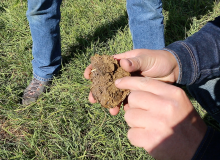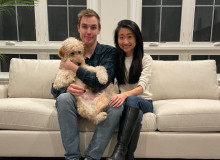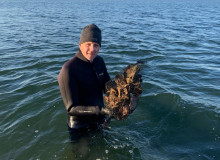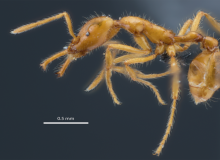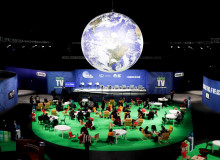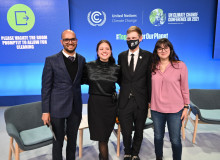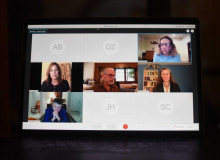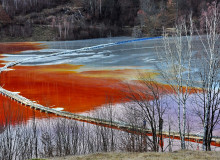science
Planet Forward Correspondent | George Washington University
An interview with Vice President of Ranch Operations at Turner Enterprises, Mark Kossler, about the benefits, challenges, and future of sustainable agriculture.
Northwestern University
Drawn together like a pair of subatomic particles of opposite charge, scientist duo Chanel La and Chris Tonge are making discoveries in medicine and energy-efficient technology, Brittany Edelmann reports.
Georgetown University
Through regenerative aquaculture, Michael Doall is using the ecosystem services of oysters and kelp to clean up our oceans and our plates.
George Washington University
Scientists describing a new species of ant, Strumigenys ayersthey, have broken with conventional naming traditions and used the pronoun “they” instead of the traditional male or female form to promote nonbinary gender inclusivity.
Planet Forward Correspondent | SUNY Environmental Science and Forestry
In the aftermath of COP26, PF Correspondent Lily John sat down with social-ecological systems and ecological economics researcher Dr. Valerie Luzadis, who attended the summit virtually.
University of Connecticut
Despite the power of big oil money, corrupt politicians, and current climate trends, there is something that gives me a surge of optimism and energy: younger generations.
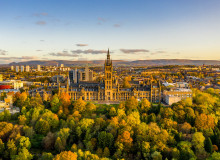
As researchers, we're focused on how to connect our university to our local communities. How might Glasgow University, shown here, connect with the community around it? (Ian Dick/Flickr/Creative Commons 2.0)
Research Director for Sustainable GW | George Washington University
The Road to COP26 | As student and faculty representatives at COP26, GW senior Jane Barkholz and Dr. Robert Orttung aim to connect the university to the broader community taking action to address climate change.
Executive Director, Global Council for Science and the Environment
The Road to COP26 | The head of the Global Council for Science and the Environment is going to COP26 to ensure that science is included in "deliberations, negotiations, and decisions that are rigorous and durable."
Planet Forward Correspondent | George Washington University
As the COVID-19 pandemic soared around the world, people turned to science for answers. Science communicators were on the front lines of understanding the virus, reporting trustworthy science and battling the spread of misinformation.
Planet Forward Senior Correspondent | Cornell University
While much about the future remains uncertain, we do know this is not the last pandemic we'll face. And if we want to prevent future pandemics, we need to focus on the impact of humans on our environment.

